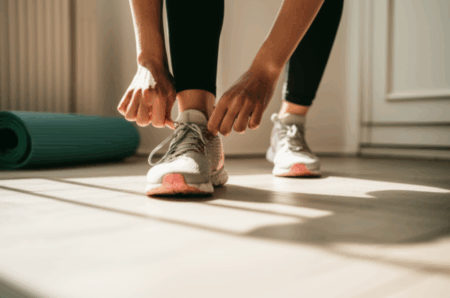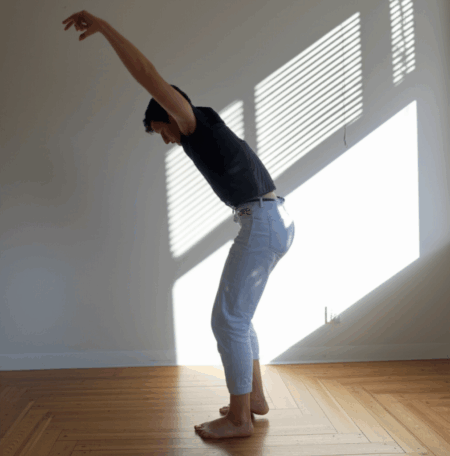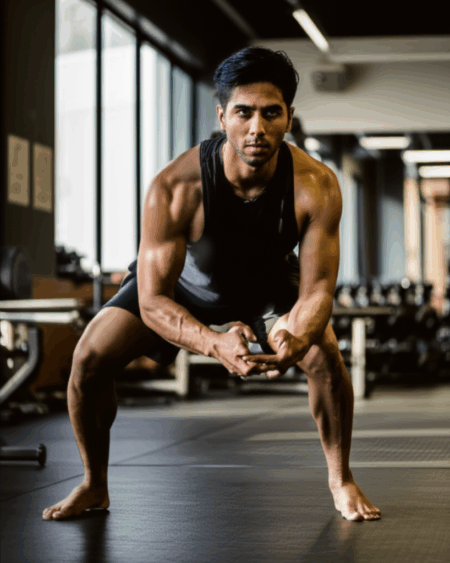Bodyweight exercises offer a versatile and effective way to build strength, improve fitness, and enhance overall well-being. Often underestimated, they can be just as effective as traditional weight training when performed correctly and progressively. This guide delves into how to maximise strength gains using bodyweight exercises, providing insights into progressive overload, exercise variations, and other key strategies to help you achieve your fitness goals.
Why Choose Bodyweight Exercises for Strength Gains?
Bodyweight exercises, also known as calisthenics, use your own body weight as resistance. They offer numerous benefits:
- Accessibility: No gym or equipment needed, making them perfect for home workouts or travel.
- Functional Strength: They engage multiple muscle groups simultaneously, improving real-world strength and coordination.
- Stability and Body Awareness: Enhances proprioception, improving balance and control.
- Muscle Growth: When progressed strategically, they can effectively stimulate muscle growth.
The Foundation: Essential Bodyweight Exercises
Before diving into advanced techniques, master these fundamental exercises:
- Push-Ups: Target the chest, shoulders, and triceps. Vary the difficulty by performing them on your knees (easier) or elevating your feet (harder).
- Squats: Work the quadriceps, glutes, and hamstrings. Modify the depth to match your mobility.
- Lunges: Strengthen the quads, glutes, hamstrings, and calves. Walking lunges add an extra challenge.
- Pull-Ups/Chin-Ups: Excellent for the back, biceps, and forearms. Use a pull-up bar or resistance bands for assistance if needed.
- Planks: Engage the core muscles for stability and strength. Side planks target the obliques.
- Dips: Primarily target the triceps, but also work the chest and shoulders. Can be performed on parallel bars or using a chair.
Progressive Overload: The Key to Strength Gains
Progressive overload is the principle of gradually increasing the demands on your muscles to stimulate growth and strength adaptations. With bodyweight exercises, you can achieve this through various methods:
1. Increasing Repetitions and Sets
- Volume: The most straightforward approach. Simply increase the number of repetitions (reps) or sets you perform. For example, if you start with 3 sets of 10 push-ups, aim to increase to 3 sets of 12 or 15.
2. Reducing Rest Time
- Density: Decrease the rest time between sets to increase the intensity and challenge your muscles further.
3. Modifying Exercise Difficulty
Variations: Progress to more challenging variations of the same exercise.
- Push-Ups: Incline push-ups (easier), decline push-ups (harder), diamond push-ups (harder, targets triceps), one-arm push-ups (very advanced).
- Squats: Air squats, jump squats, pistol squats (very advanced, requires balance and strength).
- Lunges: Static lunges, walking lunges, reverse lunges, Bulgarian split squats (harder, requires balance).
- Pull-Ups: Assisted pull-ups (using resistance bands), chin-ups (easier than pull-ups), L-sit pull-ups (advanced).
Leverage: Adjust your body position to change the leverage and make the exercise harder or easier. For example, moving your hands closer to your body during push-ups increases the involvement of the triceps.
4. Changing Tempo
Time Under Tension (TUT): Control the speed of your movements to increase the time your muscles are under tension.
- Eccentric Contractions: Focus on slowing down the eccentric (lowering) phase of the exercise. For example, take 3-5 seconds to lower yourself during a push-up or squat.
- Isometric Holds: Pause at the most challenging point of the exercise. For example, hold the bottom position of a squat or push-up for a few seconds.
5. Altering Base of Support
Stability: Reduce your base of support to increase the difficulty.
- Examples: Performing push-ups or squats on an unstable surface (e.g., a balance board or BOSU ball) challenges your core and stabilizer muscles.
6. Combining Exercises (Supersets & Circuits)
- Compound Sets: Pair exercises that work the same muscle groups to increase fatigue.
- Circuits: Perform a series of exercises with minimal rest in between to improve cardiovascular fitness and muscular endurance. For instance, a circuit could include squats, push-ups, lunges, and planks, performed back-to-back.
Sample Bodyweight Workout Routine
Here’s a sample routine to get you started. Adjust the sets, reps, and exercises based on your fitness level.
Warm-up (5-10 minutes):
- Jumping jacks
- Arm circles
- Leg swings
- Dynamic stretching
Workout:
- Push-Ups: 3 sets of as many reps as possible (AMRAP)
- Squats: 3 sets of 15-20 reps
- Walking Lunges: 3 sets of 10-12 reps per leg
- Plank: 3 sets, hold for 30-60 seconds
- Pull-Ups (or Inverted Rows): 3 sets of AMRAP
- Dips (Chair Dips): 3 sets of AMRAP
Cool-down (5-10 minutes):
- Static stretching, holding each stretch for 20-30 seconds
Advanced Bodyweight Exercises
Once you’ve mastered the basics, challenge yourself with these advanced movements:
- Pistol Squats: A single-leg squat that requires significant strength, balance, and flexibility.
- Handstand Push-Ups: A challenging upper body exercise that builds shoulder and tricep strength. Start with wall-assisted variations.
- Muscle-Ups: A combination of a pull-up and a dip, requiring significant upper body power and coordination.
- Planche: An advanced gymnastic movement that requires incredible upper body strength and core stability.
- Human Flag: A static hold that demonstrates exceptional core and upper body strength.
Important Considerations
- Proper Form: Focus on maintaining correct form throughout each exercise to prevent injuries and maximise muscle activation.
- Listen to Your Body: Don’t push yourself too hard, especially when starting a new exercise or progression.
- Consistency: Regular training is essential for seeing results. Aim for at least 3-4 bodyweight workouts per week.
- Nutrition: Support your training with a balanced diet that provides adequate protein for muscle repair and growth.
- Rest and Recovery: Allow your muscles time to recover between workouts. Aim for 7-9 hours of sleep per night.
Expert Opinion
According to Justin Thomas Miller, a certified strength coach, bodyweight exercises can be as effective as weight training for building muscle, provided you understand how to modify leverage, range of motion, and tempo. Complex bodyweight movements engage more muscle groups simultaneously than isolated weight exercises, improving functional strength patterns.
Conclusion
Bodyweight exercises are a powerful tool for building strength, improving fitness, and achieving your physique goals. By understanding the principles of progressive overload and applying them strategically, you can continuously challenge your muscles and see impressive results. Whether you’re a beginner or an experienced fitness enthusiast, bodyweight training offers a versatile and accessible way to unlock your full potential.







